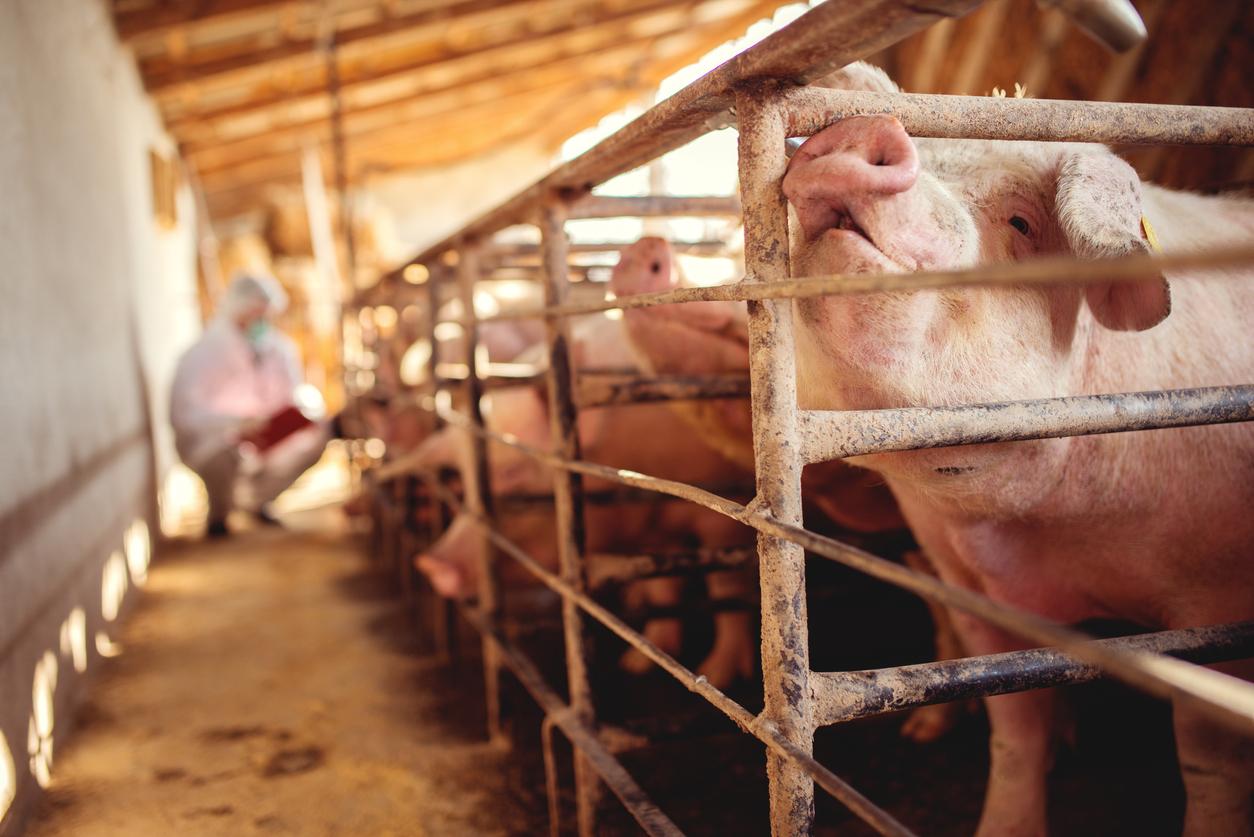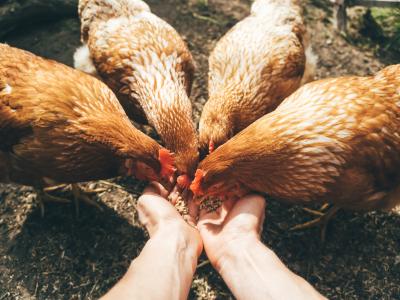Two new reports from the US Department of Agriculture (USDA) provide a sense of the extent of antibiotic use and stewardship among US livestock producers.
The two reports from the USDA's National Animal Health Monitoring System examine how antibiotics were used on beef feedlots and large swine operations in 2016. That was the last year before the Food and Drug Administration (FDA) implemented a new policy preventing use of medically important antibiotics for growth promotion in food-producing animals and requiring veterinary oversight for the use of medically important antibiotics.
The data from the two reports show that 87.5% of feedlots and 95.5% of swine operations gave cattle and pigs any antibiotics in feed, water, or by injection in 2016. Just over 90% of swine operations gave pigs medically important antibiotics, while 56% of feedlots used medically important antibiotics.
"These numbers clearly show that there is a fair amount of antibiotic use in livestock," Karin Hoelzer, PhD, DVM, a senior officer with the Pew Charitable Trusts' antibiotic resistance project, told CIDRAP News. "Having such widespread reliance on antibiotics is concerning."
Respiratory conditions often targeted
While the numbers aren't necessarily surprising, the two reports are important because they provide much needed data on antibiotic use in livestock production that, up until now, hasn't been available. The FDA issues a yearly report on the sales and distribution of medically important antibiotics for use in food-producing animals, but that report provides no information on how and why those antibiotics are used, or how they were administered.
"These reports really give deeper insight into how and why antibiotics are used in US agriculture," Hoelzer said. "They also look at stewardship practices, such as how decisions about whether to treat and how to treat are made, how farmers are accessing veterinarians and veterinary care, and where farmers are getting antibiotics."
The data, which came from 199 swine operations and 378 feedlots, show that most swine sites (98%) and feedlots (85%) had a relationship with their veterinarian. According to the swine report, in 87% and 91% of farms that gave antibiotics to pigs in feed, a veterinarian decided when to use antibiotics, and which antibiotics to use. The numbers were similar for those farms that gave antibiotics in water.
By comparison, veterinarians were involved in the decision to give antibiotics to cattle only between 25% and 37% of the time, depending on the route of administration.
Hoelzer said she found the reasons farmers use antibiotics in swine and cattle to be among the most important takeaways from the two reports. In both feedlots and swine operation, the reports found that the primary reason for antibiotic use was to prevent, control, or treat respiratory diseases. Treatment of diarrhea was also a common reason for antibiotic use in pigs. Nearly a third of beef feedlots (29%) and 13% of swine operations were using antibiotics for growth promotion.
"On the positive side, these reports start to give us an idea of what these underlying conditions are, and what needs to be addressed to reduce that use," Hoelzer said.
In pigs, gentamicin, neomycin, oxytetracycline, and penicillin G were among the most frequently used medically important antibiotics. Chlortetracycline was the most commonly used medically important antibiotic on beef feedlots.
Hoelzer also said the reported use of injectable antibiotics was noteworthy, because the FDA policy applies only to antibiotics used in feed or water. That means farmers don't need a prescription from a veterinarian to use them. Nearly 90% of swine sites reported giving antibiotics by injection, while 80% of feedlots gave injectable antibiotics to individual sick cattle and 14.8% gave injectable antibiotics to groups of cattle. Large feedlots with more than 1,000 cattle were more likely than small feedlots to give antibiotics by injection.
According to the FDA, roughly 95% of medically important antibiotics used in water and feed require veterinary supervision. The remaining 5% are mostly injectable antibiotics.
"Injectable products were not affected by the FDA's policy changes, so a lot of them are still available over the counter, even medically important ones," Hoelzer said. "These reports provide some information not only on how many operations are using injectable antibiotics—which is quite a lot—but how many are using them in groups of animals.
"That shows how important it is to get these products under veterinary oversight," she added.
Call for even more data
So far, the FDA policy changes appear to be having some impact on sales of medically important antibiotics to farmers. According to the most recent FDA report, the sale of medically important antibiotics for use in food-producing animals fell by 33% from 2016 through 2017, and by 43% since sales peaked in 2015.
But critics have called for the FDA to do more to reduce the use of medically important antibiotics on farms. Requiring veterinary oversight for use of all injectable antibiotics is just one of the additional steps that experts like Hoelzer would like to see the FDA take. Another is a limit on how long antibiotics can be used in feed and water. In addition, critics remain concerned that while medically important antibiotics are no longer allowed for growth promotion, they're still being widely used for disease prevention in food-animals.
The USDA says the reports will provide a baseline to compare how antibiotic use in animal production has changed since the FDA rules went into effect, and enable livestock industries to assess which stewardship measures are being successfully implemented.
For her part, Hoelzer would like to see more data. She pointed to the lack detail on how long farmers are using antibiotics in their animals, and what fraction of animals on each farm are being treated with antibiotics. She would also like to know how many farmers are using alternative treatment options farmers are using to minimize antibiotic use.
"This is a step in the right direction, but we clearly need more data," Hoelzer said.
See also:
May 23 USDA report on antibiotic use and stewardship in US swine operations
May 23 USDA report on antibiotic use and stewardship on US feedlots























